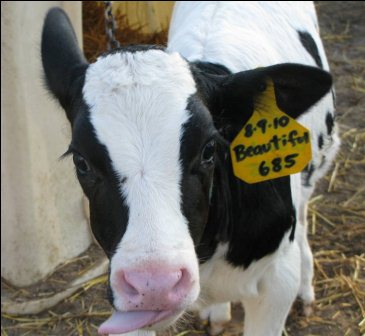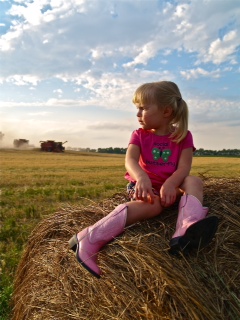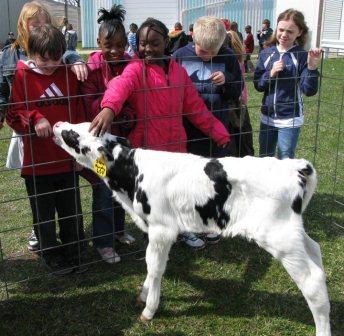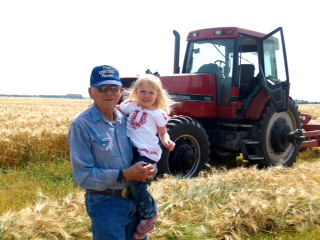Today’s post will also be featured on Rural Women Rock.

Confession: I didn’t grow up on a farm.
My husband did, but we don’t live on a farm now. Or even in a rural area. We live in St. Louis. Before that we lived in Chicago. And we’re moving to Wichita.
So what am I doing on a blog called Rural Women Rock?
Did you know 17 percent of Americans live in areas deemed rural? That’s 50 million people.
And, get this, a staggering 80 percent of our nation’s land is rural.
Rural spreads way beyond the Corn Belt. It exists in every state of the Union. So do its values: hard work, family, community, love of God and country.

For 85 years, my husband’s family operated a dairy farm in south central Missouri. At one point, they had 1,600 acres and 200 milking cows.
All that changed the gut-wrenching day in 1993 when the dairy cows were sold. There was no other choice. There was no way for the dairy farm to continue.
A portion of land remains in the family. My in-laws still farm some livestock and crops in addition to their day jobs. To live rural is to live resourceful.
One year, I traveled the Midwest on puddle jumpers for my employer at the time. My assignment? Get a firsthand glimpse of Farming, USA.
The sheer vastness of cropland left me stunned. Rows and rows, fields and fields of corn and soybeans, wheat and barley. A giant patchwork quilt of farms.
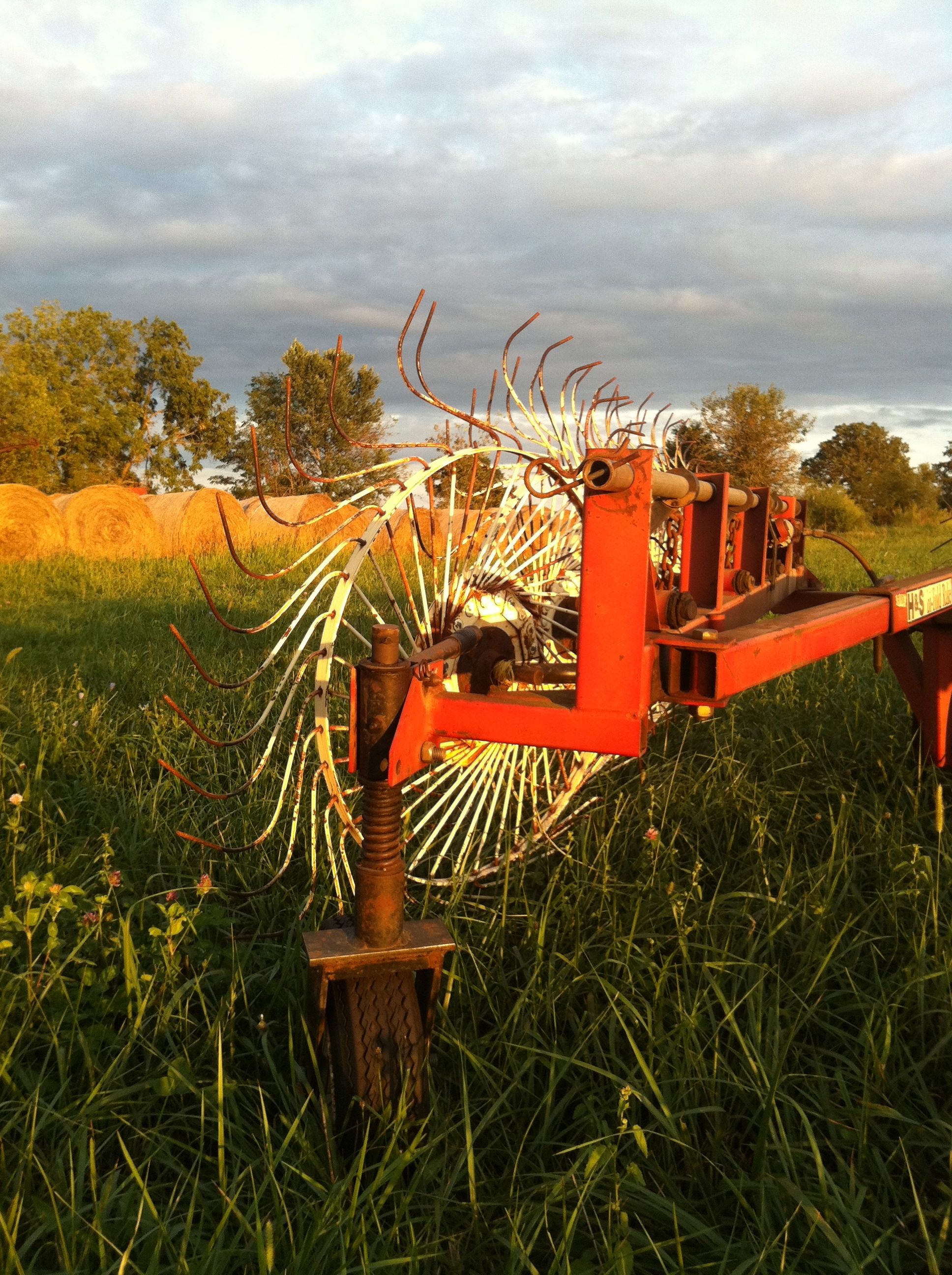
America’s cropland is exquisite. The dirt in the South where I was raised is the dramatic red earth of Tara. But in Iowa, the dirt is chocolate cake. Fluffy, dark, rich. Nothing else like it in the world.
A quote from the EPA: “The United States is blessed with more arable land than any other nation on earth.”
Did you read that? We’re blessed.
Only about one-fifth of our arable land is used for crop production and one-fourth for grazing livestock. Farmers make this small percentage go a long, long way.
Today each one American farmer produces food for 130 other people.

And Audubon ain’t got nothing on rural. Nature thrives in rural.
Have you ever seen a flock of wild turkeys float freely down a dirt road, bouncing like a bunch of walking pillows?
Or watched a wolf’s shadow sweep across your truck’s headlights on the way back to your cabin?
Have you witnessed the timeless words of The Holly and the Ivy come to life in a field before your eyes? Oh, the rising of the sun and the running of the deer.
I have, and I was just visiting.
This is the land of spacious skies and amber waves of grain. The fruited plain, bountiful, free. It is our forgotten heritage as Americans.
A few more conclusions quoted from the EPA:

- The U.S. farmer is the most productive in the history of the world.
- Food is more affordable in the United States than in any other developed country in the world.
- There is a definite trend toward fewer farms producing an increasing share of agricultural products in this country.
- In spite of many challenges, U.S. agriculture is uniquely positioned to provide for the food and fiber needs of a growing world community.
Not to mention the food is delicious. Blue plate. Meat plus three. My mother-in-law makes a powerful concoction she’s understatedly dubbed cheese potatoes. Now that is how the west was won.
Women who live rural, just like women who live metro, support their families and communities in ways too numerous to count.
Theirs is a sisterhood of endurance through hardship. Perseverance with grace in times of boom and in times when there’s no other choice but to sell the cows.
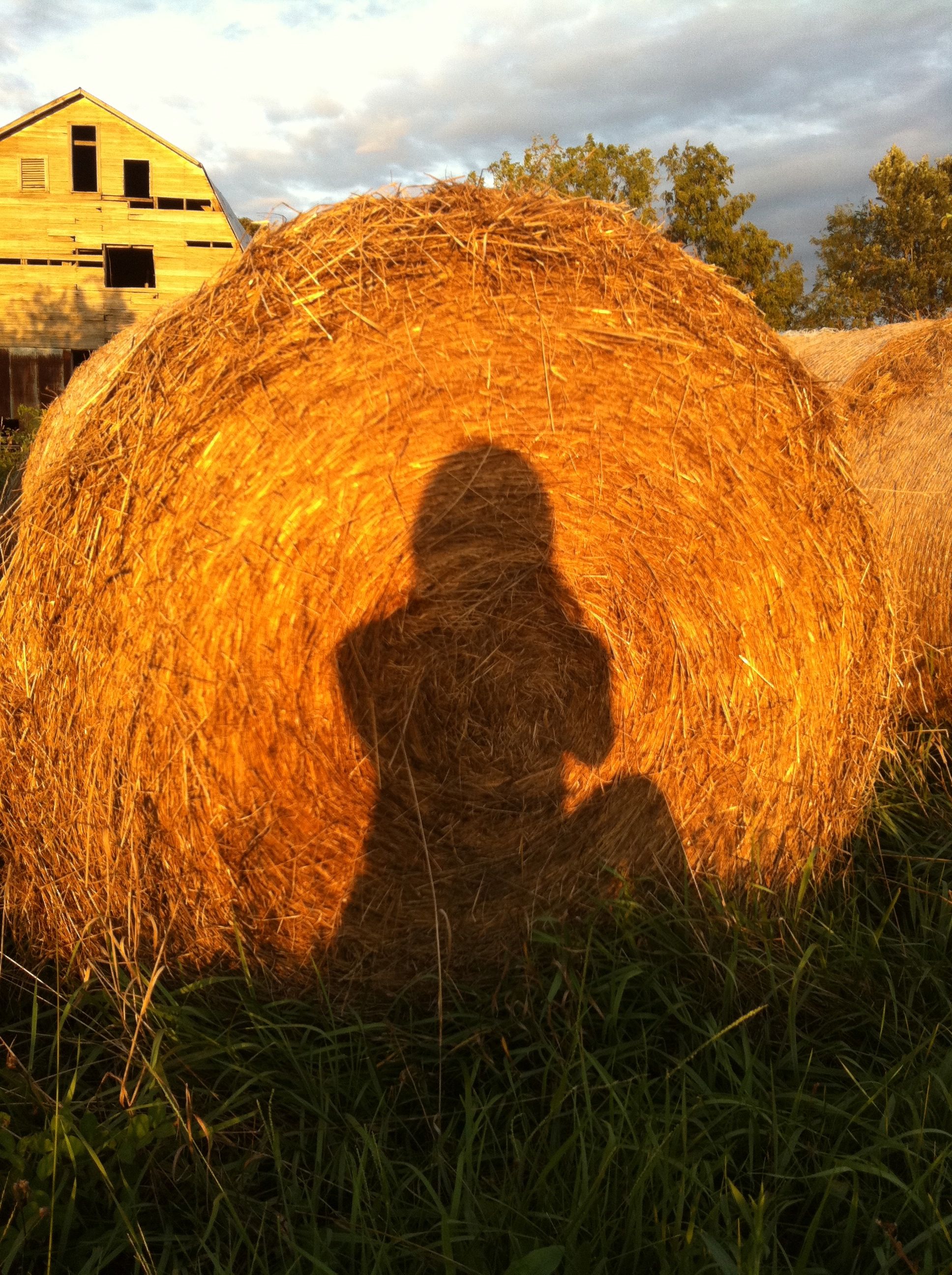
Chances are, most Americans will never live rural or set foot on a working farm.
Most of us are are far removed from the technology and commitment it takes to run the most productive farms in human history and meet the demands of the world’s table.
And yet agricultural exports, born of rural America, are a bright spot in our stagnant economy. Many things can be jettisoned when money is tight, but people have to eat.
I’m on a blog today called Rural Women Rock because they do.
Who they are, what they do, where they live matters to America and to the world. Daily we reap the benefit of their harvest. We live in a house they built. And for that, we are truly blessed.
The LORD will indeed give what is good,
and our land will yield its harvest. Psalm 85:12 NIV
Delightful song by Ashton Shepherd, Where Country Grows.
The photos in this post were taken on the Whetstine farm in Cabool, MO.
